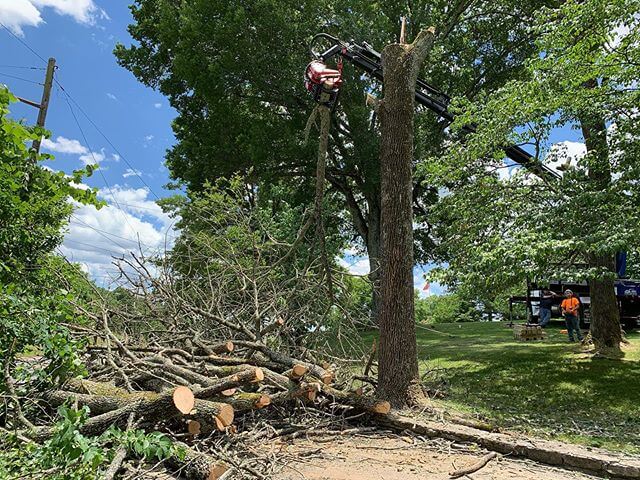There are 3 primary reasons for tree trimming. Trim for safety and security when branches are also weak to make it through heavy winds, snow, or ice. Other safety issues take place when branches are as well reduced to enable pedestrians or cars – or, when tree limbs block presence to quit indications or grow as well close to the high-voltage line. Health and wellness reasons to prune a tree may consist of: cutting limbs to permit enough air as well as light or getting rid of parts that are dead and infected. The third reason to trim a tree is to try and enhance its looks by improving as well as improving the tree’s aesthetic balance. Efficient trimming ought to leave the tree healthier as well as a lot more eye-catching. Complying with are some fundamental ideas for effective trimming.
Recognize your factor for trimming. As pointed out above, the key goals for pruning trees are to boost safety and security, plant health and wellness, and also the tree’s visual allure. Trees that could continuously be pruned for security reasons – particularly if they turn into above high-voltage lines or block pathways and also roads might be also big for the room. Sometimes, getting rid of a tree that is also huge for the area and also replacing it with a more appropriate specimen might be the best selection.
Comprehend the natural form of your tree. In general, trees take on a couple of basic forms. Conifers like ache and spruce trees expand in a pyramid or inverted cone form. These trees have a single stem that matures the full size of the tree and all branches grow out of that stem. Deciduous trees consisting of maples as well as oak trees expand in a round pattern. A solitary stem at the bottom separates right into significant branches, which after that partition right into still smaller branches. Appropriate pruning deals with these all-natural grow patterns, however, don’t cut all limbs shorter to require a tree right into these forms. Rather, trimming is about uniquely getting rid of limbs without damaging the major stem.
Select branches wisely. Trees have methods of self-pruning. Limbs that don’t obtain sufficient light, are harmful or that aren’t highly connected to the stem will ultimately pass away and also be lost from the tree. Pruning speeds up this natural process and also ensures that branches don’t threaten homes or the security of people or residential animals.

Plan prior to you begins eliminating branches. Excellent choices for pruning include branches that overlap or massage various other branches. Pruning should improve access to light and also air for the staying branches. Additionally, eliminate any type of branches that aren’t strongly affixed – seek v-branching patterns since they typically aren’t as healthy and also u-shaped branchings. As well as, get rid of any kind of branches that are dead or infected. Work purposely and also avoid eliminating any more than 1/4 to 1/3 of tree limbs in a single year.
Trim at the correct time. Generally, the very best time to prune trees is throughout inactivity in late autumn or wintertime. It is less complicated to see the development patterns of deciduous trees after they had dropped leaves, as well as trees, are more likely to repair their injuries and get ready for brand-new growth in the springtime when pruned in inactivity.
Finally, for the finest outcomes take into consideration working with a specialist from treesnstumpsrus.com. In many cases, the best option is to consult a certified arborist or another tree expert. Trimming at the incorrect time can leave your tree at risk to parasites as well as other parasites. Pruning inaccurately can make it difficult for a tree to recover, as well as inefficient pruning can leave you with trees that aren’t as risk-free, healthy and balanced, or eye-catching as they ought to be.





